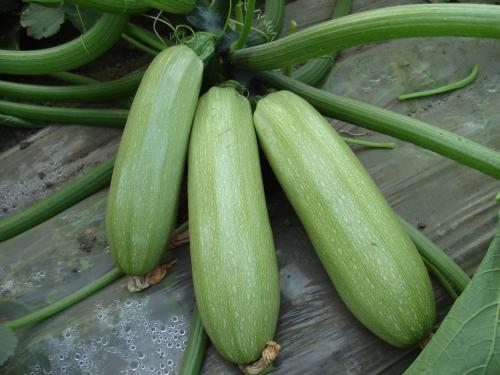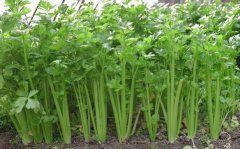How to grow watermelon: planting method and planting time of watermelon
Fertilizer management techniques of organic cultivation of small cucumber
Cantaloupe, Cucurbitaceae, Cucurbitaceae. Small cucumber, also known as cucumber or flower melon, covers an area of more than 100 hectares in Ilan and Hualien counties, making it a major melon and fruit vegetable in the area. The potassium requirement of small cucurbit is particularly high, and its effect on yield is higher than that of other important nutrients such as calcium, nitrogen, phosphorus and magnesium, but in organic cultivation, it is often a difficult problem to provide organic materials for potassium. In the past, only a few things such as plant ash could be used to supplement it.
On the other hand, Taiwan produces more than 500000 metric tons of rice husk waste every year, which is rich in nutrients such as silicon and potassium, but because of its hard and loose texture and hydrophobic fine hairs on the surface, it is not suitable to be directly applied to the soil. The rice husk compost made from rice husk mixed with chicken manure, yellow bean cypress and rice bran was applied to the soil to cultivate crops in this site, and it was found that it could effectively improve the availability of several nutrient elements such as phosphorus and potassium in the soil. and there is a phenomenon of accumulation with continuous application, which is suitable for the production of melons and fruits such as cucumber. Originally, there were few literatures on fertilizer cultivation of cucurbit at home and abroad, not to mention the recommendation of organic fertilizer. According to the results of the experiment, it can not only provide a reference for organic cultivation, but also be used for general cultivation and fertilizer management.

Preparation of Rice Husk composting
First of all, in composting facilities that can shelter from wind and rain, uncrushed rice husks, rice bran (or yellow bean cypress) and chicken manure are evenly mixed at 4:1:1 volume ratio, replenish moisture to about 60%, and the stacking height is about one to one or five meters. Turn the pile once a week, and it can be used in two months. Among them, uncrushed rice husk is not easy to decompose completely, and its function is to support the structure of composting, maintain its ventilation and provide space and carbon source for microbial growth, while chicken manure and rice bran are the main sources of nitrogen, phosphorus and other nutrients. The composting product is a mixture of incompletely decomposed rice husks, microbial mycelium residues and their metabolites, and the percentage content of nitrogen-phosphoric anhydride-potassium oxide-organic matter is about 1.9-4.0-2.4-68.
Attention should be paid to the regulation of ventilation in the process of composting. Although the uncrushed rice husk is the main material to support composting, it should be turned moderately, which can not only make the internal and external layers of compost mix evenly, but also accelerate composting and improve the quality of composting.
Moisture management is also an important factor in the success or failure of composting. Excessive drying should be avoided to affect composting or nutrient loss caused by too much water. The maturity of compost can be judged by the changes of temperature, color and smell. When the material is mixed and stacked evenly, if the moisture content is appropriate, it should start to heat within one or two days, and the internal maximum temperature can even reach 70 degrees Celsius, and then gradually drop, and the temperature will rise again after each turn, until the temperature change slows down, which means that most of the composting material is mature. Compost can be regarded as fully ripe compost when it changes from bright yellow to dark brown and gives off the smell of soil rather than the sour smell of fermentation.
Application method and effect of compost in field
In addition to the supply of nutrients, the application of compost is also an important function for soil physical improvement. The application of a large amount of compost must be fully mixed with the soil. The experimental results show that applying a large amount of compost to the soil surface instead of mixing with the soil has almost zero effect on increasing crop yield and wastes the salary of topdressing. Therefore, the pile fertilizer should be applied once with mechanical application before planting, and the cultivator should be used to make it fully mixed with Table 10. The amount of fertilizer per hectare needs about 30 metric tons to maintain the growth. In addition to eliminating the application of topdressing, its residual effect can be maintained for more than half a year or even longer.
If the next crop is tomato, it is only necessary to supplement materials with high nitrogen content during topdressing to promote crop growth, such as yellow bean cypress or rice bran. From the experiment, it is found that the small cucurbit cultivated with organic fertilizer can not only blossom and bear fruit earlier, but also prolong the harvest period, and then increase the total yield.
When there is too much nitrogen fertilizer, the vegetative growth is stronger and the reproductive growth is delayed, and it will inhibit the differentiation of female flowers, even conducive to the occurrence of diseases and insect pests, and then affect the yield. In general, melon farmers still apply a lot of nitrogen fertilizer in the later stage of cultivation to maintain the growth of small cucurbit, so as to prolong the harvest time, but the results of this experiment show that the increasing time is not enough to offset the yield reduction caused by excess nitrogen. Because of the strong nitrogen metabolism in plants, it is easy to accumulate more alkaloids and affect the transformation of sugars, resulting in a bitter taste; while organically cultivated cucurbits release nitrogen slowly and evenly in compost, so the products are sweet and delicious.
Conclusion
In the continuous pursuit of increasing crop yield, we consume a lot of energy and mineral resources to make pesticides and fertilizers, and put them into the environment, causing serious pollution problems and endangering human health. Although crops produced by long-term use of chemical fertilizers and pesticides may maintain a high level of yield for some time, they may also sacrifice the quality of the products, lose their original flavor, or even deteriorate their taste. Millions of metric tons of agricultural wastes and more than 10 million tons of livestock wastes are produced every year, and their final disposal is also an important environmental protection problem. If organic matter fertilizers can be made back to the soil, it can not only cultivate soil fertility, but also reduce the impact of wastes on the environment, and save the energy needed to make chemical fertilizers. Moreover, organic melons produced by composting can be said to be delicious and safe healthy fruits and vegetables, and everyone can eat more.
- Prev

Cultivation methods, cultivation and planting techniques of celery
Celery organic cultivation variety celery petiole slender hollow, strong flavor, can be used for stir-frying, cooking and spices. Varieties can be divided into local species: field tail species (green leaves and white bones), green tube, summer celery; western species (green and yellow). The petiole of the field tail species is light green, less fibrous and divided.
- Next

The growth process of eggplant: what about eggplant deformity? The cause of abnormal fruit of eggplant
In the process of eggplant production, it is common to see eggplant fruit bent, split, or hard tied up like a stone. The cause of occurrence is mainly affected by variety, plant growth potential, environmental factors and cultivation techniques. It is pointed out that eggplant pollen sprouts and the pollen tube elongates the most.
Related
- A one-day flower show brings 130 million yuan in orders! Nanhai, this Phalaenopsis exhibition is amazing
- What do the flower language and meaning of Lutheran tree mean? Precautions for planting Lutheran tree
- Encounter Chaoshan Kongfu tea, not without this cup of Phoenix single clump
- The durian market in Vietnam and Thailand is flooded. The price of imported durian has plummeted by 30-40% in a month.
- Shanghai solved the problem of local vegetable supply by planting 80,000 mu of green leafy vegetables.
- Wageningen University has become the best agricultural university in the world for the seventh time in a row.
- The strongest export season of South African grapes is full of challenges, with exports to Russia falling sharply by 21%.
- Sri Lanka is on the verge of bankruptcy, "Tea for debt" Organic Agriculture Revolution aggravates the Food crisis?
- Turning waste into earthworm manure and worm manure into organic fertilizer-A new choice for auxiliary farming
- Organic rice growers shoulder the responsibility of nurturing agricultural talents! Yinchuan Sustainable Farm with Organic Life Camp

